1) Which one of the following compounds is least soluble in water at room temperature?
a) ethane
b) ethanol
c) ethylamine;
d) ethanoic acid
Solution
2) The structure that is formed from the addition reaction between but-2-ene and Cl2 is
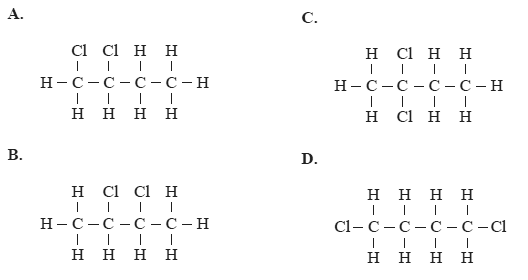
Solution

3) Consider the structures below.
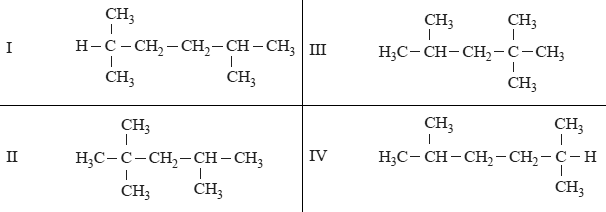
Which structure is that of 2,2,4-trimethylpentane?
a) I and III only
b) I and IV only
c) II and III only
d) II and IV only
Solution
4) The compound that is not an isomer of of 2,2,4-trimethylpentane
a) octane
b) 3-ethylhexane
c) 2, 4-dimethylpentane
d) 2,4-dimethylhexane
Solution

5) Alanine, lysine and aspartic acid are amino acids. Which of these will react with 0.1 M HCl(aq)?
a) lysine only
b) alanine and lysine only
c) aspartic acid and lysine only
d) alanine, aspartic acid and lysine
Solution
6) Halothane is a general anaesthetic. The diagram below outlines the reaction pathway for the formation of halothane

Which of the following correctly identifies the reaction occuring in step 2 and correctly states the systematic name of product X?

Solution

7) The pain killer ibuprofen lysine is more soluble in water than ibuprofen and can therfore be administered intravenously. Ibuprofen lysine is formed when ibuprofen and the amino acid, lysine, react with each other.

The structure of ibuprofen lysine is most likely
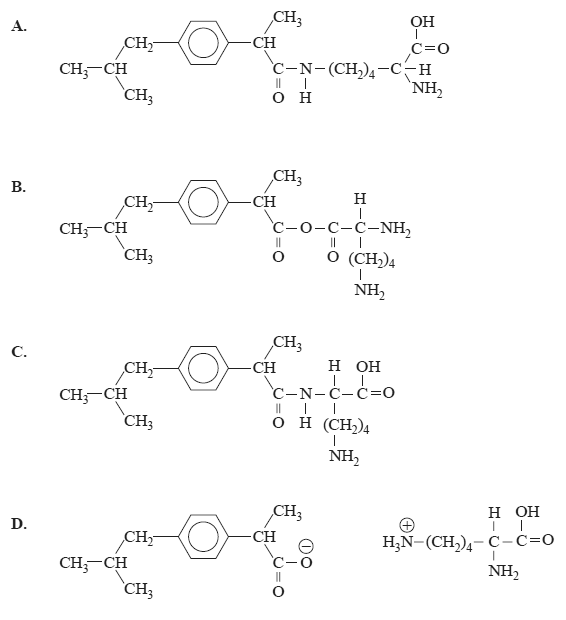
Solution
Click for detailed explanation of the solution to 7)

8) Banana oil, 3-methylbutylethanoate, CH3COOHCH2CH2CH(CH3)2. is a sweet smelling liquid that gives bananas their characterisitic odour.
A chemist working for Raz Bananas Pty Ltd has proposed the following reaction pathway for the synthesis of banana oil.
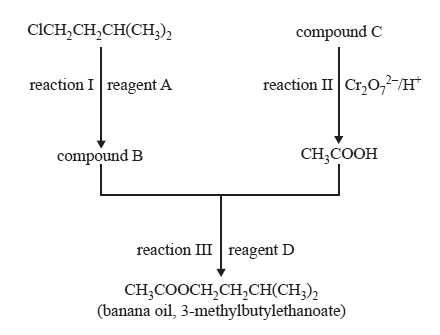
i) identify reagent A
Solution
ii) Compound B is an alcohol. Draw its structutre
Solution
iii) Give the systematic name of compound B
Solution
iv) Give the systematic name of compound C
Solution
v) Identify reagent D
Solution
vi) Which reaction is an oxidation reaction
Solution

Solution
9) Canola oil is completely converted to biodiesel fuel. One of the components of this biodiesel is ethyl stearate. Once cooled the product mixture of the conversion of canola oil to biodiesel separates into two layers. The top layer, layer A, in the diagram is the biodiesel fuel.
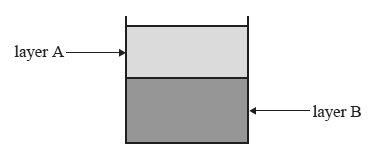
The following chemicals are involved in the production of biodiesel.
i) glycerol
ii) potassium hydroxide
iii) ethanol
Which of the above chemicals are found in layer B?
a)
i and ii only
b) i and iii only
c) ii and iii only
d) i, ii and iii
Solution